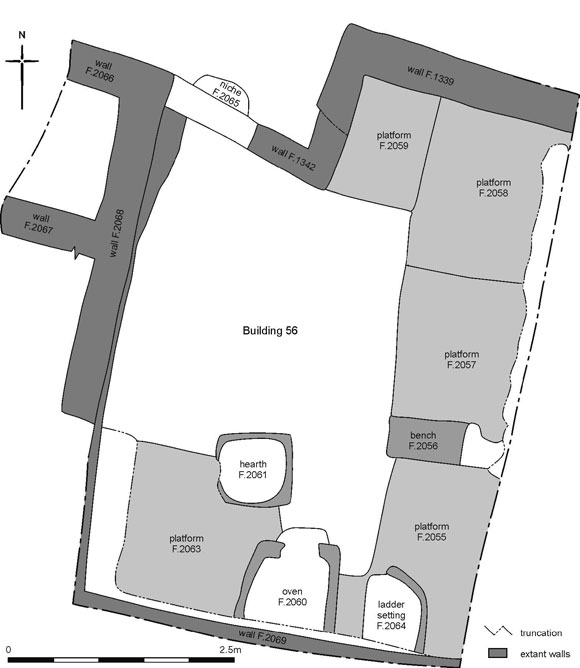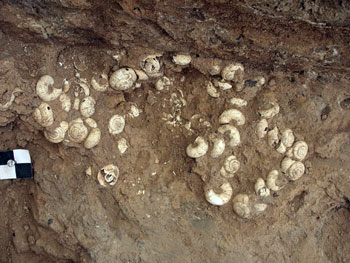ÇATALHÖYÜK 2005 ARCHIVE REPORT
| |
Excavations of the South Area
Buildings 44 & 56
Roddy Regan
Site Assistant: Alex Pryor
Abstract
This seasons work in Building 44, attributed to Level IV, focused on the completion of the primary phase of the building and its construction phase which was found to be intricately linked with the closure activities of the underlying Building 56. As was defined in 2004 the internal layout of Building 44 consisted a series of platforms and benches laid out along the eastern wall, a platform in a northern bay area and a platform in the southwestern corner. An oven cut into the southern wall of the structure. Up to eight burials were found cut through the central east platform, along with disarticulated infant bones.
The underlying earlier building 56 (attributed to Level V) mirrored the layout to Building 44 only diverging in the northwest corner where a blocking in the wall leads into a ‘room’ and a wall niche close by. On the floor in front of the niche was a concentration of shell, possibly a necklace and possibly a ‘closure’ deposit.
A number of interesting closure / construction events and deposits illustrates the continuity and possible ‘ritual’ nature of moving from one house and into another. One such item, which may mark a transitional event, is the clay stamp seal (Fig. 2) that was found in room-fill between Buildings 56 and 44.
Özet
Tabaka IV’ya tarihlenen Bina 44’de bu sene yapılan çalışmalar, binanın ilk evresi ve alt kısımdaki Bina 56’nın kapatma aktiviteleriyle incelikle birleşen yapım evresinin tamamlanmasına yoğunlaşmıştır. 2004’de belirlendiği gibi, Bina 44’ün iç düzenlemesi güneybatı köşesindeki bir platform, kuzey alana yerleştirilmiş bir platform ve doğu duvarı boyunca yerleştirilmiş bir sıra seki ve platformlardan oluşmaktadır.Yapının güney duvarı içine bir fırın yapılmıştır.Merkezi doğu platformu içine kesilmiş alanda 8 adet gömü ve eklemsiz çocuk kemikleri bulundu.
Tabaka V’e tarihlenen alt kısımdaki Bina 56, kuzeybatı köşesinde bulunan bir odaya açılan kapatmaya ve hemen yanındaki bir duvar nişine doğru ayrılması haricinde, Bina 44’ün iç düzenlemesini taklit eder. Nişin hemen önündeki zeminde büyük ihtimalle bir kolye veya kapatma birikintisi olan bir kabuk topluluğu bulundu.
İlginç olan bir seri kapatma, yapı evreleri ve birikintiler, büyük ihtimalle bir evden başka bir eve taşınma olayının devamlılığını ve dinsel doğasını yansıtır. Geçissel bir olayı simgeleyen bir buluntu, Bina 56 ve 44 arasındaki oda dolgusunda bulunan kilden yapılmış mühürdür.
Figure 45. Plan of Building 56. |
Building 44
Excavation re-commenced on Building 44 in the South Summit area on 4/7/2005. Last season saw the removal of much of the internal architecture of the structural sequence and we believed that over much of the excavation area we had reached the level of upper ‘room fill’ of the building below. However, the discovery of several burials beneath the central east platform meant that the removal of the primary platform sequences along this eastern side of the building had to wait until this year.
Excavation of course, has led to a reappraisal of some of the assumptions made about Building 44 last year. This has led to a reallocation of some feature numbers, or contexts within features and these will be discussed within the text. Along with these changes the floor areas within Building 44 have now been allocated a space number, Space 120, in order to group any activities, patterns or artefacts recurring on these surfaces. It is also now apparent that Building 44 continues to the east beyond the current edge of excavation, access probably gained by a disturbed crawl-hole in the south-east corner of the building.
Last season it appeared that the burials were sealed beneath the primary plaster surfaces and levelling deposits that made up the central platform F.1320. Removing these remaining surfaces enabled contemporary deposits to be simultaneously removed from bench F.1310 and platform F.1321, respectively lying south and north of F.1320. This in turn, allowed the removal of surfaces from wall F.1340 and pilaster F.1308 lying to the east of platform F.1320 and the removal of the remnants of platform F.1312 within the south east of the building. As with last years archive report the stratagraphic chronologies revealed within each feature are best described separately followed by a brief discussion on the sequential relationship the features to one another.
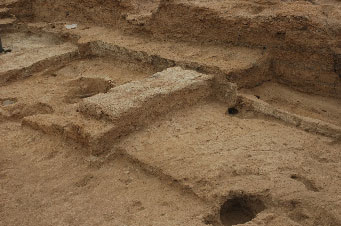
Figure 46 . Features along the eastern wall of Building 44. Platforms F.1321, F.1320, F.1312 and bench F.1310. |
Platform F.1321
Last years excavation stopped at a point where a distinct division was seen running east west across the platform surface, effectively dividing the platform into northern and southern areas. Initially this was thought to be the emergence of another bench mirroring bench F.1310 to the south of Platform F.1320. The removal, however, of a sequence of plaster surfaces and associated make up deposits from the platform indicated this was not a bench, although the demarcation of northern and southern areas of the platform appeared real. It is possible that this division within the surfaces represented a physical separation of the two areas, perhaps by a screen? Within last years archive report the supposed ‘bench’ was allocated a feature number F.1343 and the ‘platform’ to its north numbered F.1344, these numbers have now been reallocated to other features. Removal of the primary plaster facing of the platform (1161/11606/11637) revealed a small pit or backfilled post hole (11618). The fill (11617) consisted of the same plaster material as the primary surface of the platform and contained several obsidian fragments along with painted shells, the latter possibly the remnants of a necklace, bracelet or armlet. Below the primary plaster surface were two further make-up/levelling deposits that may indicate the final moulding of the platform in preparation for plastering. The construction of the platform in its initial phase consisted of infill/levelling deposits (11642) and (11643), these retained by a mud-brick wall construction (11640)/(11641).
Platform F.1312
Most of this platform had been removed during last seasons’ excavation, apart from the primary levelling deposit of (11626). This deposit was possibly contemporary with oval ladder slot (11624)/(11625), and suggests that a ladder placement was present at this early stage of the buildings’ construction. The need for a ladder perhaps suggested that high walls surrounded Building 44, either from other buildings or that the walls of Building 44 had been completed at this early stage. If the later then it may be that the roof had also been built and was integral to this early construction phase, this is a point to which we will return later in the discussion.
Bench F.1310
The removal of the early surfaces within platform F.1320 enabled contemporary surfaces to be removed from bench F.1310. Plaster surface (11601) sealed make-up/preparation deposit (11602), the later the same as deposit (11603) that filled a small ‘depression’ (11604). This ‘depression’ was situated along the northern upper edge of the bench was matched by a similar feature on the south of the bench excavated last season ((11477)). What these shallow depressions represent is open to question, but it is possible that they held some form of screen structure. The position of the bench within the room mirrors a division seen within the floors lying to the west that divided ‘clean’ and ‘dirty’ areas of the building. It is possible that this division extended along the bench to the eastern wall.
The primary plaster surface on the bench was (11612) this sealing the mortar and mud-brick core of the bench construction (11614)/(11615). The mixed nature of the mud-brick and the fact that one brick displayed burning on its underside suggests some of the bricks had been reused. The discovery of reused burnt mud-brick has also led to a reappraisal of what was considered the remnants of an oven or hearth (F. 1337). Rather than representing the remains of an oven feature the burnt mud-brick may be a reused brick utilised in the raising/levelling of bench F.1321.
Pilaster F. 1308
As with platform F.1321 and Bench F.1310 the removal of the primary surfaces from Platform F.1320 meant Pilaster F.1308 could also be fully excavated. Plaster surface (11627) and preparation deposit (11636) were removed revealing moulded mud brick deposit (11637) that provided the constructional core of the pilaster.
Platform F.1320
Last year it was suspected that the burials discovered within the platform were potentially under the platform and not cut through the surfaces of the platform. This hypothesis was tested with the careful removal of the final vestiges of the platform surfaces and make-up deposits left in situ last season, (11470), (11472), (11466), (11468) and (11499) the later the primary surfacing of the platform. As also noted last year obsidian catches had been deliberately placed along the northern and southern edges of the platform within several of these surface and make-up deposits, cluster (11492) in (11466) and cluster (11498) in (11468).
The edge of the platform consisted of a mud brick and mortar construction (11495)/(11629) built around the underlying and probably slightly ‘heaped’ burial deposits, the edges of this deposit effectively straightened or tidied up prior to the construction of the platform edging (11607).
Cutting into the edging of the platform construction and sealed by the construction core of bench F.1310 was the placement of a child or infant skull within a small pit or possible redundant post position (11620), (1621), (11622).
Excavation has revealed that the initial construction of platform F.1320 was first in the sequence of the architectural features built along the eastern wall of the building. Probably soon after platform F.1321 was added to the north with bench F.1310 to the south. The construction of these were no doubt quickly followed by the addition of platforms F.1312 and F.1332 respectively to the south and northwest, along with pilasters F.1308 and F.1309. It must be stressed that all these architectural features appear to have been ‘roughed out’ within this early construction stage prior to the ‘finishing’ levelling deposits and primary plaster surfaces being added. So while a sequence is discernible in which feature came first, it would appear that the arrangement of architectural features we see throughout the life of the building was set out from the start.
Burial Sequence
While it became clear that all the burials were located beneath the construction phase of Platform F.1320, the distinguishing of any burial cuts continued to allude excavation of the homogenous ‘burial soil’ (11608). As perhaps to be expected, located throughout this deposit were numerous disarticulated human remains. Many of the disarticulated bones can be accounted for as being the result of later burials disturbing earlier ones, with the bones redeposited and dispersed throughout the fills of the latest burials. Many of the disarticulated bones may ultimately be allocated to an individual burial as represented by disturbed or partially articulated remains. The presence, however, of numerous infant or neonate bones within the ‘burial soil’ are more difficult to explain as no partially articulated or complete remains of children of this age were discovered within the excavation. It is possible that these baby burials had been wholly disturbed by later burials and it waits to be seen how many individuals these remains represent. It is also a possibility that the remains are the products of secondary deposition, the disarticulated neonate remains entering the grave fills alongside the primary burials.
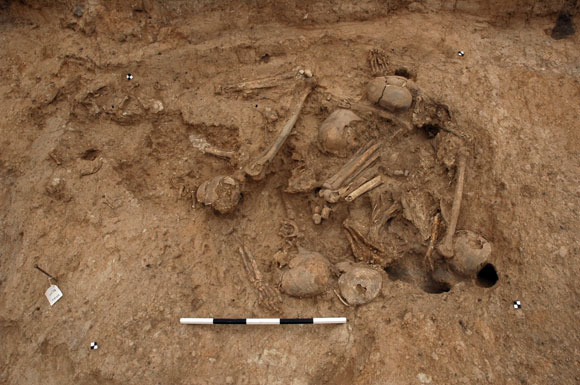
Figure 47. Skeletons (11608) in burials F.1343 & F.1344 cut through platform F.1320. |
Despite this problem of defining the burial cuts the presence of articulated remains suggested the presence of at least eight burials within the sequence. Several of the burials had obviously cut into and removed parts of earlier burials and because of this at least 4 phases of burial could be discerned, although this does not preclude the possibility that all burials were inserted individually over time. The earliest burials were F.2052 and F.2051. F.2051 was cut away by two later burials F.1348 and F.1349, these in turn cut by F.1346 and F.1343. The last burials in the sequence were F.1344 and F.1347. Most burials appeared to be of older juveniles or adults. All burials appeared crouched although the extremely truncated nature two of the burials makes this speculative although likely. Another repeated occurrence within the burials was that the heads were all placed to the west of the presumed grave cuts.
The difficulty of distinguishing the burial cuts was also reflected in recognising which layers the earliest burial actually cut. While it is probably safe to assert that some of the burials cut upper room-fill deposit (11416) it still remains a possibility that earlier burials may have cut the underlying deposit (11652). This may not seem an important point in itself but it is the authors’ belief that the burials were being inserted as the lower building was being levelled prior to the construction of Building 44. Even if this was not the case a certain degree of longevity is suggested by a burial sequence, indicating a break in time between backfilling the lower building and the construction of the internal architecture of Building 44.
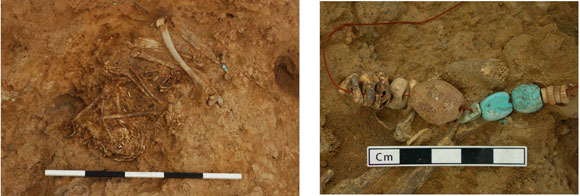
Figure 48. Skeleton (11657) with beads of bone, dog teeth and stone found around the ankle bones.
|
The levelling deposits (11416) and (11652) also pose some interesting questions. These levelling deposits consisted of a fairly homogenous clay silt and either represent the final deposits in the room-fill sequence or represent the primary levelling deposits of the construction phase of Building 44. Whatever their function both deposits displayed evidence of discrete areas of burning/scorching, (11451) on deposit (11416) and (11661) on underlying layer (11652), both events situated in the same position, to the west of the burial area. The relatively fragile nature of these burnt areas is interesting in that if they had been left open to weathering for any length of time the loose ash–like material would surely have dispersed. Equally the clean upper levelling deposits (layers (11416) and (11652)) displayed little evidence of having been left ‘open’ for any length of time. Rapid sealing may explain the survival of (11661) but it cannot explain the survival of (11451) which was not rapidly sealed but cut into by the burial sequence. If, as mentioned above, there is the possibility of walls existing at an early stage of construction, as suggested by a ladder base, then it is also a possibility that the area was at least partially roofed or covered prior to the beginning of the burial sequence.
Foundation and ‘room-fill’ Sequence.
Beneath layer (11652) were two large levelling/consolidation deposits or ‘room-fills’, (11662) proceeded by (11670). These events were separated by a thin ash deposit (11644) and a possible post hole (11668)/(11669), the former possibly representing one ash dump the latter more difficult to explain in the sequence. The larger dumps appeared to have been deposited fairly rapidly and while consistent were probably composed of numerous dumping episodes. These deposits consisted mostly of mud-brick material with some darker ashy midden-like patches. The presence of some burnt and/or broken mud-bricks suggested that at least some of the material was demolition derived. These deposits also appeared to have been deliberately packed in against the foundation walls of Building 44, as this material was much more compacted and less mixed than the material placed away from the foundation walls. This no doubt was done to strengthen the walls and counteract the slumping that appeared to have been a problem within the earlier building (Building 56). Both deposits displayed this characteristic; the main difference between deposit (11662) and (11670) was that the latter appeared to contain more midden-like material as represented by increased presence of ash, charcoal, bone, pot etc.
Prior to the deposition of the levelling deposits, some major consolidation preparations had to be undertaken, as represented by mud-brick and mortar foundations. It was at this point in the excavation that only became clear that some of the walls of lower Building 56 had been reused within Building 44, with some strengthened by internal foundation supports. This consolidation work may have been deemed necessary prior to the construction of the superstructure of Building 44 as Building 56 appeared to have suffered from severe weakness at its southern end, as evidenced by slumping of the floors and features. What appears to have happened, and this will need confirmation by excavation, is that the southern and eastern walls of Building 56 had collapsed or been demolished and replaced by foundations F.2053 and F.2054. In addition to this the south west corner of the building was strengthened by foundation wall F.1345, while the west wall of Building 56, F.104, is supported by the addition of foundation wall F.2062. Thus part of wall F.104 from Building 56 is re-used within Building 44, along with walls F.1323, F.1342 and F.1339, with new walls constructed at the south and east, F.1340 and F.1341, these built on the new foundations.
The foundations of Building 44 are partially cut into Building 56 where they don’t directly overlie the architecture, and suggest the walls and floors of the building were exposed when the foundations of the new building were constructed.
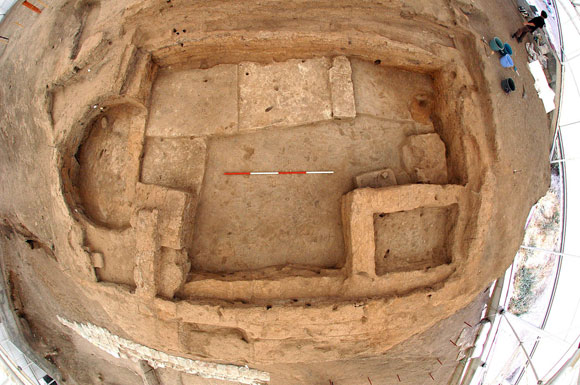
Figure 49 . Foundation walls F.1345 in SW corner of 'closed' Building 56 in preparation for the internal furbishment of Building 44. |
The construction of rectangular foundation F.1345 in the south west corner of the building was of considerable interest. The foundation followed the line of and is directly constructed over a platform within the south west of Building 56. The foundation in turn forms the basis for platform F.1314 in Building 44. Lying directly on the surface of the platform of Building 56 but contained within foundation F.1345 was deposit (11648). This deposit is perhaps of some importance as it contained numerous objects of stone including, rub stones, smooth stones and grind stones, along with a pair of stone axes. Also present were burnt clay objects that may represent fragmented pot stands and numerous pottery fragments. These deliberately placed objects lay in a matrix of ash/charcoal that contained bone and obsidian fragments. The importance of this deposit is that it may represent the collected objects and midden material of the final phase of occupation of Building 56. There is no doubt this deposit was deliberately placed and sealed within the foundation. That it derives from Building 56 is perhaps suggested by the pristine nature of the floors and surfaces uncovered in that building, indicating the building had been ‘cleaned’.
Sealing deposit (11648) was (11644), which differed in that it mainly consisted of a mud brick/mortar like material not too dissimilar to the ‘room-fill’ deposits seen within the rest of the building. The deposit, however, contained several bone tools and fairly frequent obsidian tools, these, perhaps, conspicuously absent from (11648). It now seems clear that deposit (11295) removed last year was part of this deposit, as are (8004) and (10603).
It is possible the interment of baby burial F.1334 in the top of this deposit, and lying under the primary surface of Platform F.1314, represents the marking of the end of the ‘foundation’ phase and the beginning of the ‘building’ phase of Building 44.
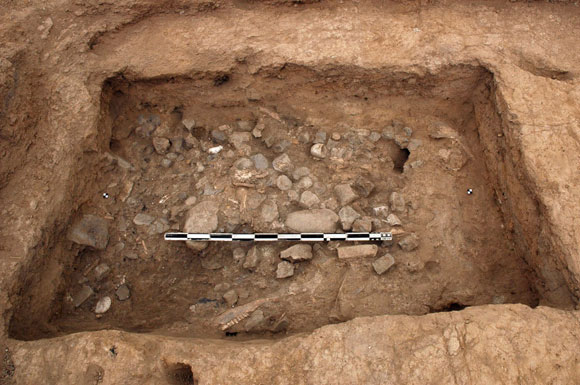
Figure 50. Deposit (11648) within foundation F.1345 contained numerous objects of stone including, rub stones, smooth stones and grind stones, along with a pair of stone axes. Also present were burnt clay objects that may represent fragmented pot stands and numerous pottery fragments these deliberately placed objects lay in a matrix of ash/charcoal that contained bone and obsidian fragments. |
Building 56
The layout of Building 56 was very similar to Building 44. The main internal part of the building consisted of a rough rectangular shape measuring 4.40-4.60m E/W and 4.60-5.40m N/S. A small rectangular ‘bay’ measuring 2.60m by 1.40m lay at the northeast of the structure.
The west wall of Building 56 consisted of wall F. 104, while the southern and eastern walls structure are cut away, demolished or lie beyond the edge of excavation. As with Building 44 walls F.1323, F.1342 and F.1339 comprising the arrangement of walls to the north.
Figure 51 . Concentration of pierced shells in front of blocked niches. |
The internal layout of the building consisted a series of platforms and benches laid out along the eastern wall, from south to north; Platform F.2055, Bench F.2056, Platform F.2057 and Platform F.2058. Another platform, F.2059, occupied the northern bay area of the building. The southwestern corner was occupied by a platform, Platform F.2063. An oven, F.2060 was centrally placed along the southern wall of the structure and either abutted or cut into the wall, although this relationship is unclear as the wall and back of the oven were cut away by the foundation of Building 44. To the north and west of the oven and positioned over the north east corner of platform F.2063, was square plinth heath F.2061. A plaster/mortar floor occupied the central area of the building beyond the oven and platform areas. Where the building differs in layout from Building 44 is the addition of a blocked ‘room’ to the north west as delineated by walls F.2067, and F.2066. Also set within wall F.1323 at the north east of the building was a blocked niche. The blocking of the niche was removed this season and while the niche was empty of artefacts a placed deposit of a concentration of pierced shells was found directly below the blocking, which may have been strung as a necklace.
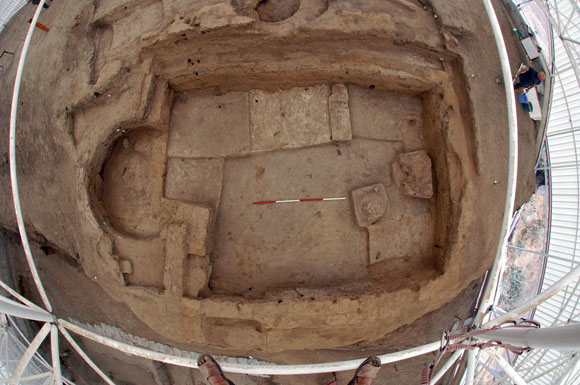
Figure 52 . Building 56, phase immediately before construction preparation for B.44. |
Continuity and Patterns
Excavating within specified limits has meant that we are able to discern changes or continuity within spaces or areas of the site over time. At present our concentration has been on one building or one building space, as reflected in the excavation of Buildings 10, 44 and now Building 56. It is difficult to say much about Building 10 beyond that in would seem to have occupied the same space as the lower buildings, as later erosion and truncation had removed much of its internal features. Buildings 44 and 56 display a remarkable similarity in layout, with the later building even reusing some of the walls of the earlier structure. Differences are of course apparent, as Building 44 does not appear to reuse the space of the north western room of Building 56, as this was deliberately blocked prior to the construction of the later building. As yet we do not know whether Building 56 extends to the east, like Building 44, beyond the current edge of excavation. If it does, then the limitation of necessary artificial edges of excavation become apparent, but that is always going to be the way at Catal, as other than complete excavation some connected archaeology will always lie beyond.
The connections between the two buildings however, go beyond the similarities of the internal layout, although this perhaps indicates a relationship between the builders/inhabitants of both structures. Why Building 56 was abandoned is of course open to question, but the severe slumping of the building at the south may indicate the deterioration of its structural integrity. The cause of this is as yet unknown but it may have been built over/into a midden or an equally unstable deposit. Whatever the reason Building 56 appears to have been deliberately ‘cleaned’ at its abandonment stage as its surfaces were remarkably pristine, in fact the only object lying directly on any feature was a grindstone fragment located on hearth F. 2061. At this point a decision was made to reuse part of the building and rebuild, but this time with strengthened walls and foundations. If our assumptions are correct then items collected from Building 56 at its final phase of occupation were placed within foundation F.1345 and the internal area of the building was backfilled/levelled. Foundation F.1345, however, not only reflects the platform below but also pre-empts the one that is yet to be constructed in Building 44. This sequence possibly indicates that the internal arrangement of Building 44 had already been decided at this early stage. Of course intention is hard to prove in archaeology, but it is perhaps further evidenced in this case by the burial settings, which appear to have been placed as to ultimately lie under Platform F.1320. What we seem to have is a series of events; abandonment – consolidation – burial - re-building – habitation, that are connected beyond the physical archaeological sequence. This might be seen as an idea, intention or plan spanning archaeological events and time albeit on at a relatively local or family scale. Basically it would appear that the construction of Building 44 was envisaged as Building 56 was being abandoned. Which might not be surprising if this was your home or your family plot. If the same group/clan/family occupied the structures, then the question has to be asked of how long a time elapsed between abandonment of one building and the construction of a new one? While the foundation construction and levelling could have happened relatively quickly, the insertion of a sequence of burials suggests a slightly longer time scale. Does the building/space take on a different aspect during this burial phase? Also if the buildings are connected through a single-family group then where are they during this time?
Throughout the excavation several deposits appear to have been deliberately placed, possibly marking individual events or delineating spaces within the building.
The obsidian deposits situated around the edge of platform F.1320 can not really be explained as casual discard and the fact there was more than one such deposit would tend to point to deliberate intent. One possibility is that these deposits delineate the ‘burial’ area when the platform is resurfaced/repaired. This interpretation is of course open to question, as is the purpose of other apparently placed deposits. Another example is the possible necklace and obsidian cache placed in a small pit again placed at the northern edge of the central platform F.1320. As the pit was also filled with plaster it is possible this deposit was associated with a primary plastering event. Similarly placed along the edge of platform F.1320 but this time on the south was the skull of a child, this placed between the construction cores of platform F.1320 and bench F.1310.
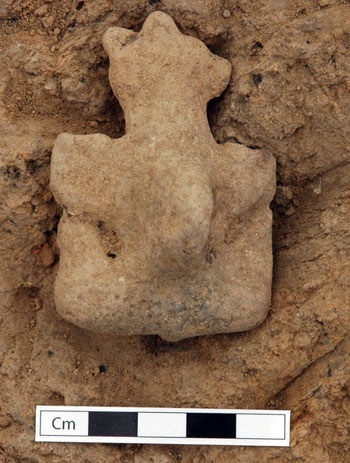
Figure 53. Back of clay stamp seal 11652.x1. |
The objects placed within foundation F.1345 in deposits (11644) and (11648) may be marking a transitional phase between Building 56 and Building 44. The placing of a baby burial between deposit (11648) and the primary surfacing of platform F.1314 may also mark a stage in this structural transition. If seen in this light the impressive clay stamp unearthed in ‘room-fill’ deposit (11652) may also mark a transitional event within the construction of Building 44. In this case the end of backfilling and the beginning of constructional levelling. Of course it could be argued that the stamp was just dumped as part of the backfilling process, its neatly clipped hands/paws suggesting that the object itself had undergone a transition. The stamp, however, was recovered from a deposit of relatively few finds and appeared to have been ‘placed’ face downwards hinting at more than casual loss.
As mentioned above the only object on the otherwise clean and apparently pristine surfaces of the features of Building 56 was a grindstone fragment on hearth F.2061. This has to be seen as a deliberate placement and can perhaps be seen as part of an established pattern at Catal of worked stones being left in/near ovens or hearths at transitional phases within their use-life. Another placed deposit seen within Building 56 was that of a shell necklace placed beneath the blocking of the niche in north west wall F.1323, this possibly representing a closing deposit.
These ‘placed’ deposits can only hint at the true nature of their deposition, but if seen as repeated actions and in specific relationships then some understanding of their purpose may be gleaned.
Recognised only at the end of this season was the presence of human remains outside of strict ‘burial’ contexts, being within ‘roomfill’ deposits. Analysis of both the faunal and human bone assemblages are at an early stage, but the recognised human remains so far appear to consist of small bones and that of small children or babies. Why these bones ended up where they are is as yet unclear but is one of many questions thrown up by this year’s excavation.
| |
© Çatalhöyük Research Project and individual authors, 2005
